- 1. Use a windshield sunshade and car window sunshades
- 2. Cover your steering wheel
- 3. Invest in seat covers
- 4. Consider window tinting
- 5. Install a solar-powered fan
- 6. Park in the shade
- 7. Put a car cover on it
- 8. Avoid parking on hot pavement
- 9. Wax your car
- 10. Maintain your windshield wiper blades
- Is it true that some exterior car colors overheat faster than others?
In the summer months, we all know the pain of getting into a scorching vehicle. The leather seats are sizzling. The steering wheel seems to be made of lava.
Let’s take a look at some easy ways to keep your ride cooler than a cucumber in a polar bear’s picnic basket, and a few products that can help.
1. Use a windshield sunshade and car window sunshades
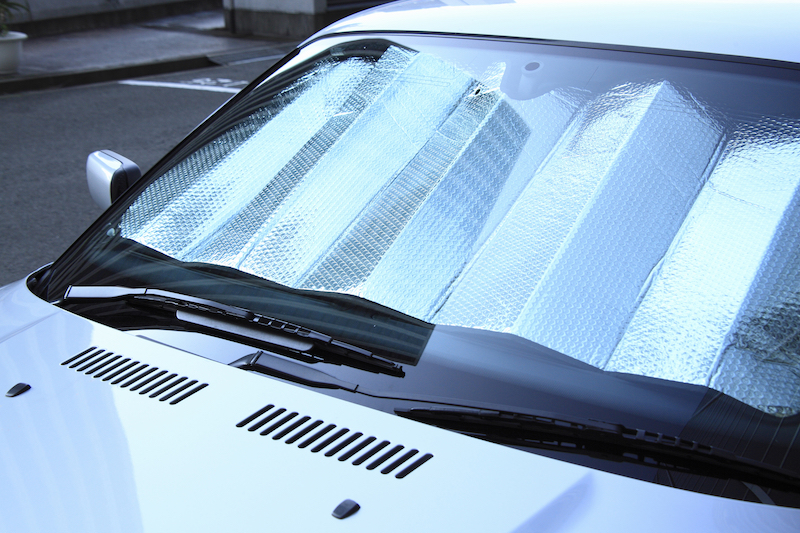
These tools are an effective way to block the sun’s rays and UV radiation, keeping your car’s interior cooler by as much as 30 degrees Fahrenheit or more, and reduce exposure to direct sunlight to your car’s dashboard electronics.
Car window shades can be easily fitted on side windows, rear windows, and even sunroofs—ranging in price from about $10 to $50. The cost of a windshield sunshade is in the same ballpark.
2. Cover your steering wheel
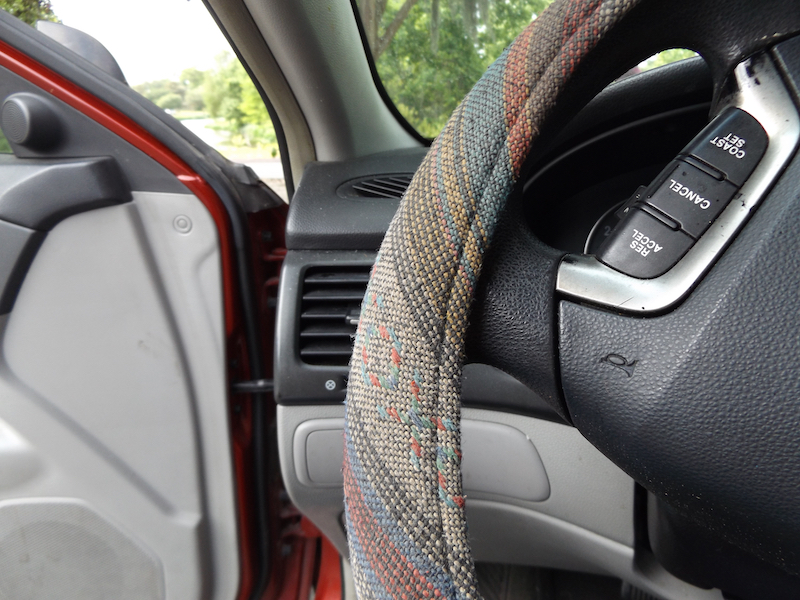
On a hot summer day, touching a heated steering wheel can feel like placing your hand on a hot stove—just from touching it for a few seconds you risk first degree burns on your hands. Use a dash cover or even a simple towel to keep the temperature of your steering wheel manageable.
Steering wheel covers can range in price from roughly $10 to $100. The material that it’s made from is one of the several factors that affects the price—in addition to things like the brand and fit.
Covers made from vinyl or polyester will likely be more affordable than covers made from leather. But leather covers are more durable and can help to keep your steering wheel cooler in hot weather.
3. Invest in seat covers
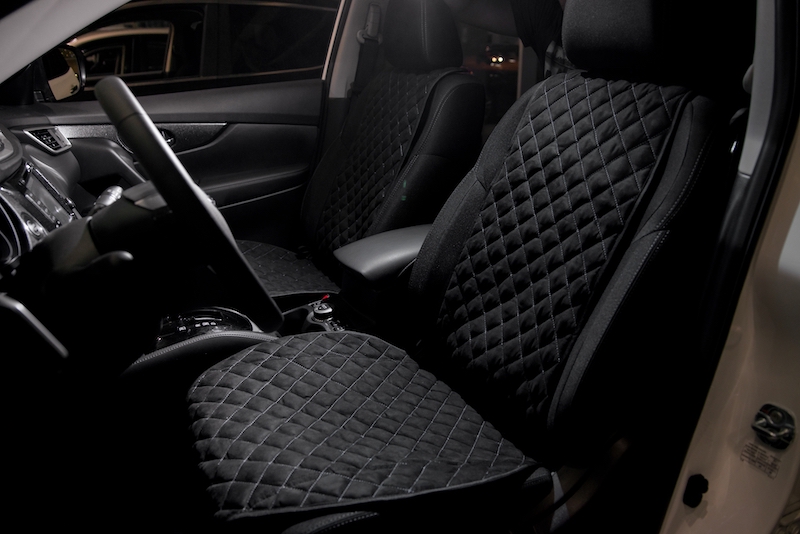
If you have leather seats in your car, they can heat up pretty quickly under direct sunlight, turning your drive into a scorcher. Specially designed seat covers can shield your seats from the sun, preventing them from reaching dangerous temperatures.
They also add an extra layer of protection against UV rays, helping preserve the quality and appearance of your seats. Car seat covers can run on average $20 to $200 for a full set.
If you don’t want full blown seat covers, covering your car seats and seat belt buckles with towels is an easy and budget-friendly alternative. This quick fix can make your initial contact with the seats and buckles much more comfortable.
4. Consider window tinting
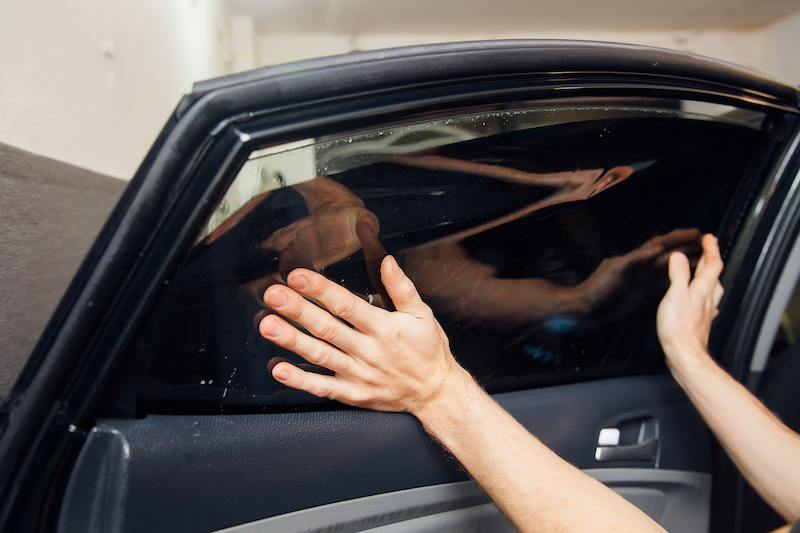
Tinted windows can be a game-changer in heatwave conditions. They reduce the amount of heat that enters your car, which can help lower the interior temperature. On average, it costs about $100 to $500 for a full car window tint.
Keep in mind that window tint regulations vary depending on where you live, so make sure to check your local laws to know what’s allowed.
5. Install a solar-powered fan
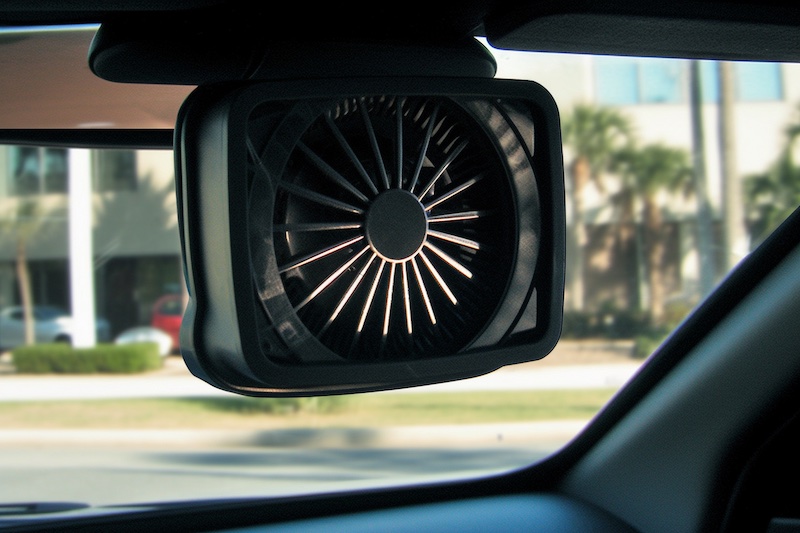
These portable fans use renewable energy—the actual power of the sun—to maintain a constant airflow inside your car, even when it’s parked, helping to keep the interior temperature down.
They’re an effective and eco-friendly way to combat the summer heat, on average costing around $10 to $30.
To install the fan, simply mount it on an open window, then roll the window up to secure it in place. Face the solar panel attachment to the outside, which then powers the fan as it draws hot air out of the car when sunlight is absorbed.
6. Park in the shade
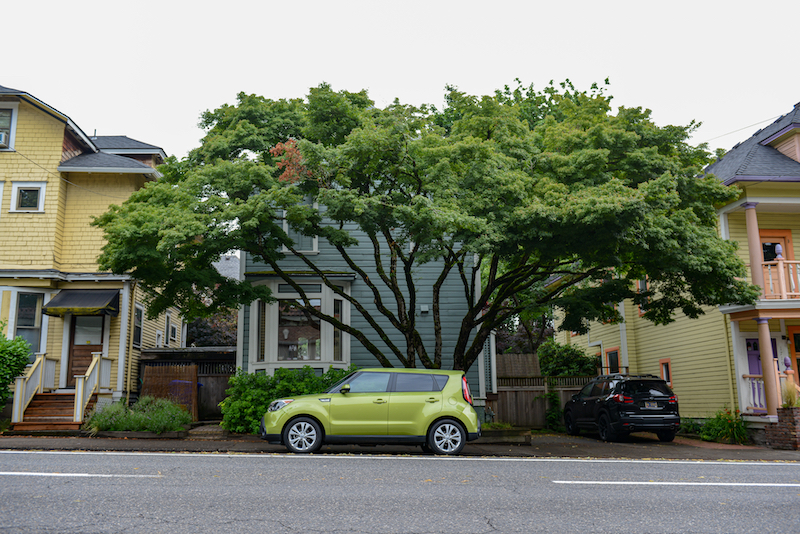
This tip might seem like a no-brainer, but it can be a real lifesaver. Parking in the shade, under a tree or even a tall building, can significantly reduce your car’s exposure to the sun’s rays.
Parking in a closed, private garage is the best option if possible, but parking garages and covered parking lots can also offer your car some protection from the sun on a hot day.
7. Put a car cover on it
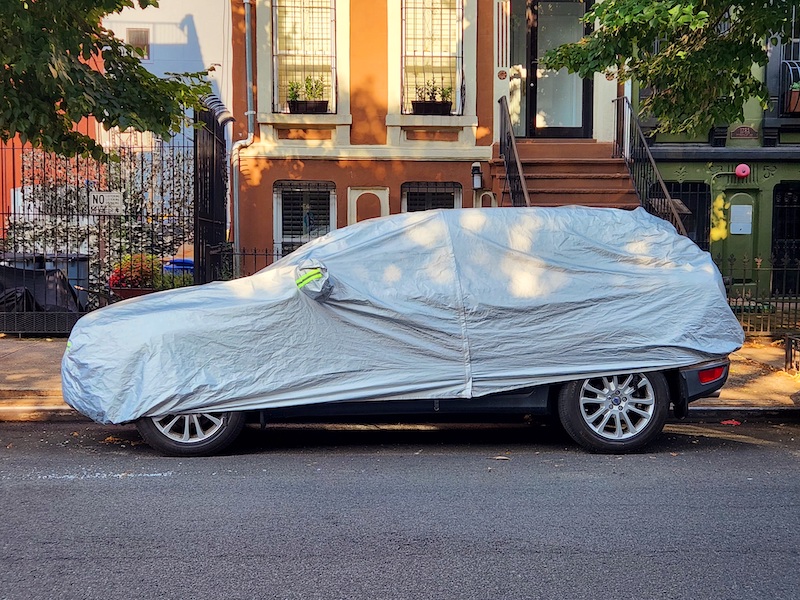
If you can’t park your vehicle under a shaded area, consider putting a car cover over your car—preferably one made from breathable material to prevent moisture buildup, which can damage the paint.
Car covers can help protect the paint job from harmful UV rays and keep the car somewhat cooler. The price tag for a car cover ranges from roughly $20 to $200—depending on factors like the type of cover, the size of your car, the material that it’s made from.
8. Avoid parking on hot pavement

Hot pavement can cause the air inside your car’s tires to expand, which can increase tire pressure. Over-inflated tires may lead to decreased traction, uneven tire wear, and they can make the tires more susceptible to punctures or tire blowouts.
So if you have a choice, try to park on grass or gravel.
9. Wax your car
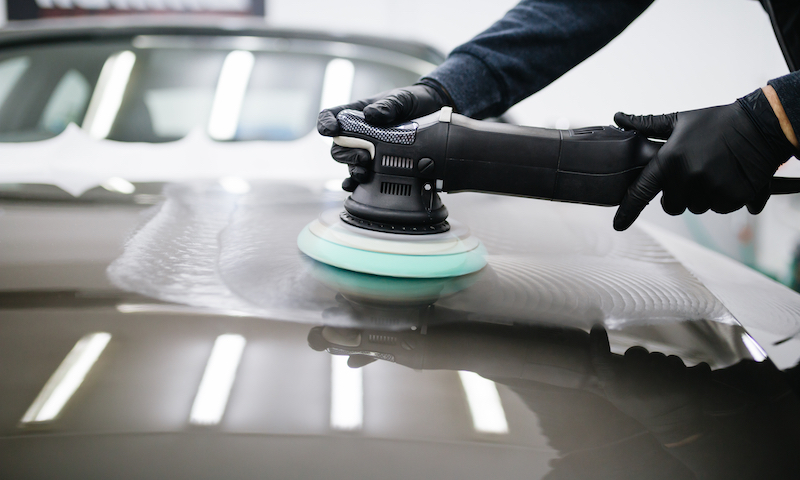
Maintaining a regular waxing routine for your car—about every three to four months—is not just about giving it that glossy, new-car look. It actually protects your car against the harsh summer sun.
Just like applying sunscreen to protect your skin from UV damage, wax acts as a barrier between your car’s paint and the harmful solar radiation—which can lead to oxidation, causing your paint to fade, discolor, or even peel in severe cases.
The slick, reflective surface of wax also helps reflect the sunlight, helping reduce heat absorption and keeping your car cooler. On average getting your car waxed costs about $50 to $150 depending on factors like the type of wax, the size of your car, and your location.
10. Maintain your windshield wiper blades
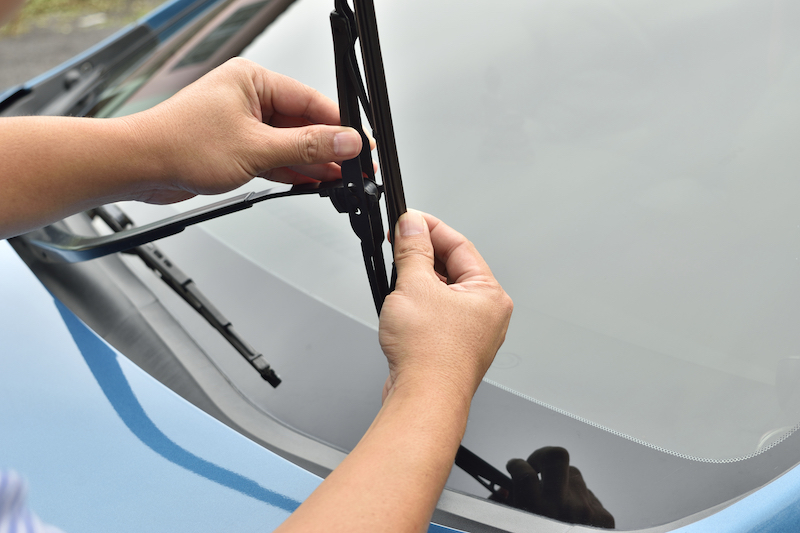
Extreme heat can cause your windshield wiper blades to dry out and crack, reducing their effectiveness.
To protect them, lift the wiper arms off of the windshield when your car is parked to avoid direct contact with the heated glass. Regularly cleaning the blades with a damp cloth and applying a rubber protectant can also prolong their lifespan and maintain their ability to remove dust, rain, and debris.
And just an FYI: Making modifications to your car—like tinting your windows, or even waxing your car—could potentially void any warranties your car might have. For example, if the wax causes damage to your car’s paint job, it probably won’t be covered by the dealership under warranty.
Is it true that some exterior car colors overheat faster than others?
We love to bust a myth, but this one’s actually true. The color of your car can significantly impact how much heat it absorbs from the sun.
Dark-colored cars—like black or dark blue—absorb more heat compared to lighter-colored cars. In contrast, light-colored cars, especially white, tend to stay cooler under the sun as they reflect more sunlight away from the car.
But the exterior color is just one of many factors that impact the temperature of your car’s interior such as the materials and colors in the car’s interior, window tinting, and overall car design.
Before we go…
It can be fun to soak up the summer sun, but our cars probably don’t share the same sentiment. Lemonade car insurance is committed to helping you navigate these hot summer days with confidence, ensuring your car is cool, comfortable, and protected.
Ready to experience a new kind of car insurance? Click below to start your free quote.
A few quick words, because we <3 our lawyers: This post is general in nature, and any statement in it doesn’t alter the terms, conditions, exclusions, or limitations of policies issued by Lemonade, which differ according to your state of residence. You’re encouraged to discuss your specific circumstances with your own professional advisors. The purpose of this post is merely to provide you with info and insights you can use to make such discussions more productive! Naturally, all comments by, or references to, third parties represent their own views, and Lemonade assumes no responsibility for them. Coverage may not be available in all states.




